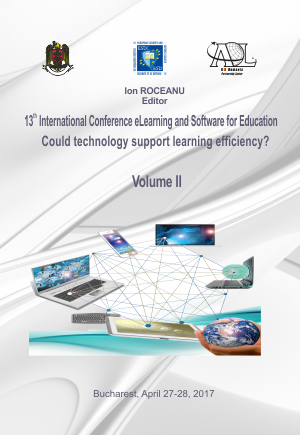OPEN SOURCE TECHNOLOGIES IN TEACHING INTERNET OF THINGS
OPEN SOURCE TECHNOLOGIES IN TEACHING INTERNET OF THINGS
Author(s): Ioana CULIC, Alexandru RadoviciSubject(s): Social Sciences
Published by: Carol I National Defence University Publishing House
Keywords: Internet of Things; embedded; web; open source.
Summary/Abstract: Nowadays a major part of the industry is shifting towards the Internet of Things, which implies building systems based on multiple interconnected embedded devices. Due to this, there is a need of engineers who are able to design such systems, enable the communication between the devices, build and deploy applications. As a result, more and more educational institutions are working on introducing IoT classes in their curricula. However, while there are plenty of hardware platforms especially designed for education, there is a lack of software educational tools in this area. This paper describes the needs we identified while teaching Internet of Things classes and how we solved the encountered issues by building an open source educational platform for the IoT. We have started teaching IoT four years ago, when there were hardly any development tools in this direction, so building even the simplest IoT device required networking knowledge and a complex setup process before getting to actually build the system. This was because students had to identify the embedded board connected to the network, connect to it and start working on the application. Apart from this, we also faced the issue of making students rely solely on terminal command and unintuitive text editors such as vim for writing the applications. All these challenges made students reluctant to the whole Internet of Things idea and usually IoT classes defaulted to simple electronics classes where Arduino made development and programming easy. Our first solution was to build a cloud platform that would allow students to program the IoT systems from a web interface, making it more intuitive and user friendly. However, by being cloud based, the platform was unreliable when the Internet connection was inconsistent and it also brought some privacy issues. The optimal solution was to build an open source platform, Wyliodrin STUDIO, that would come as a Chrome application. The platform allows students to easily connect to the embedded devices and deploy applications they write in an intuitive interface. Wyliodrin STUDIO scans the network for the available devices and displays them to the students who can connect to any of them. Afterwards, the students can write applications in multiple programming languages, even visuals ones, in a web editor and with a click of a button, the applications gets deployed on the board. This simple process allowed us to focus on the electronics and programming part specific to the IoT, rather than on the setup. This made the teaching and learning experience more fluid and efficient.
Journal: Conference proceedings of »eLearning and Software for Education« (eLSE)
- Issue Year: 13/2017
- Issue No: 02
- Page Range: 56-61
- Page Count: 6
- Language: English

